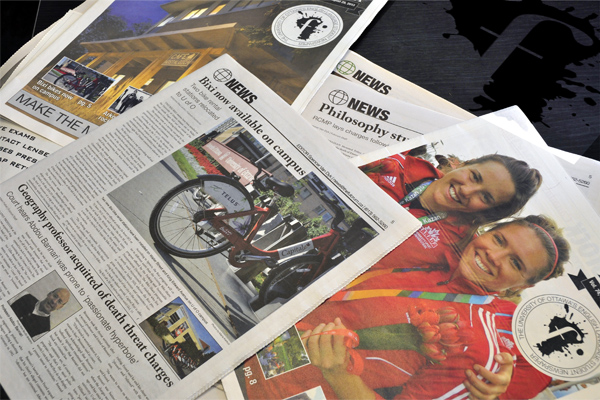University, City to measure impact of light rail on U of O facilities upon its completion
While construction of the new light rail transit (LRT) campus station might be inconvenient for commuters, it also introduces a new set of challenges for the University of Ottawa Faculty of Science’s Nuclear Magnetic Resonance (NMR) facility, which houses millions of dollars of research equipment.
Dr. Glenn Facey, facility manager of the NMR facility, said this equipment is used to determine the composition of chemicals by using the absorption of radio waves to provide a “fingerprint for the compound you put in.”
This process, called spectroscopy, uses a very large magnet and tests whether chemical reactions are successful.
Facey explained that the LRT will be powered by direct, current electricity, and that it would generate a magnetic field. His concern is that this magnetic field will interfere with the accuracy of the equipment’s readings, and that the “fingerprints” collected for the samples will get “blurred out.”
He also said that the NMR facility is facing a “worst case scenario” with their location next to the future campus station stop, as the magnetic field effect is worsened when trains accelerate and decelerate.
While a simple alternative might be to move the equipment, Facey said this is easier said than done.
“The cost of moving each one of these pieces of equipment is of the order of $40,000 per piece of equipment, and it takes about a month,” he said. “The problem is not just the move, but having the appropriate space to put it. Right now, we don’t have space.”
According to Facey, since there are about 120 hands-on users of this equipment, a month-long move could delay some research performed by graduate students.
In an email to the Fulcrum, U of O media relations manager Néomie Duval said that “the university is still in the data collection and information gathering phase,” and that “it would be premature to answer any question regarding the moving of equipment at this time.”
Both the university and the City have independently gone around the campus and measured magnetic fields at various places, including the laboratories.
“We’ve looked at those magnetic fields, we know all of our equipment works, we have the specifications from the instrument companies… and we’re well within those limits,” said Facey.
“Once the trains are running, they’re going to run them empty for a short period of time, and then we’re going to repeat all of those baseline measurements with the train running, to see what the effect of the train will be.”
According to Facey, the possible effect of the LRT on this equipment is not new, and he said that other institutions that have had a LRT built through their city have experienced this same problem.
“This isn’t new, the university has known about this, I brought it to their attention at least three years, probably four years ago. And I’ve told anyone who will listen, up to the president of the university.”
Facey said that the university has since been cooperative in hearing his concerns.
If moving is necessary, Facey said there could be a positive side to the difficult process, as it could result in a unified research space to store the U of O’s equipment.
“At the end of that extremely painful period of transition, we’d have a much better department.”






